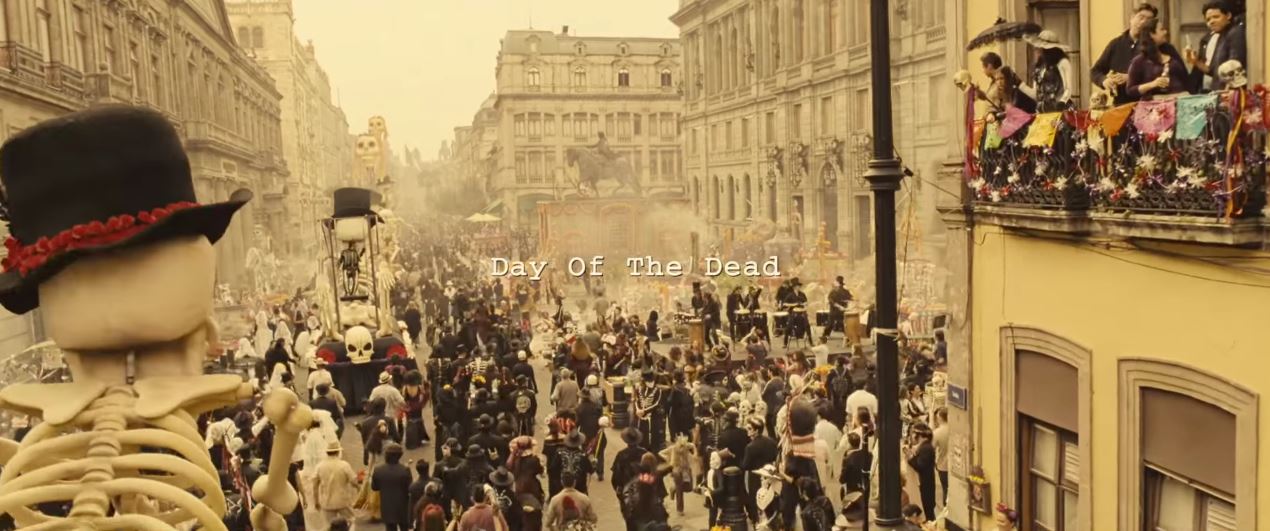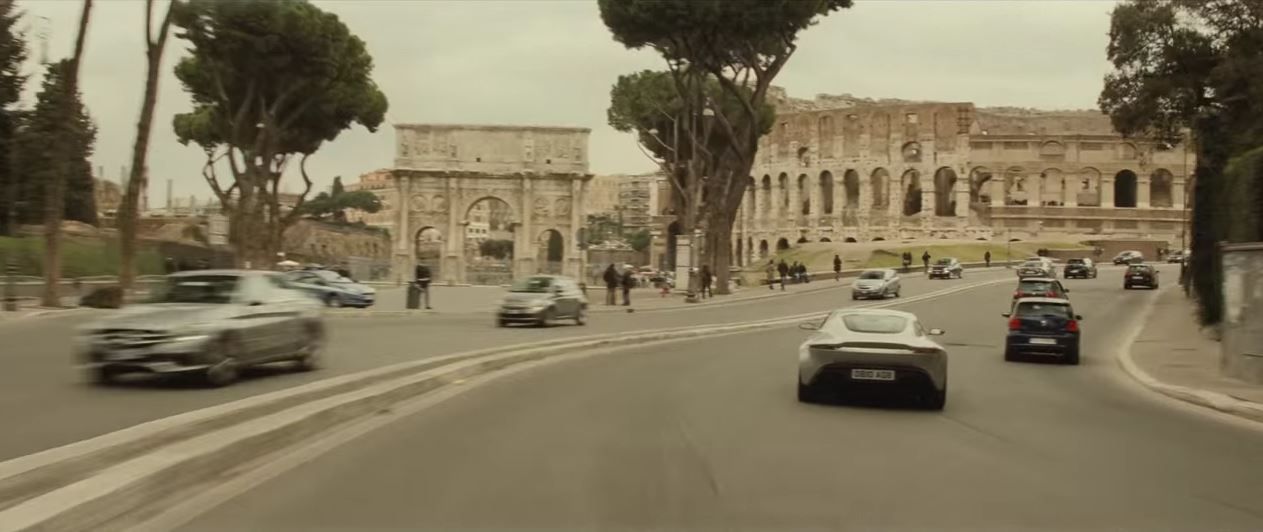The Spectre of Heritage
What happens when James Bond comes to your city? Nadia Bartolini explores the haunting nature of heritage through the 2015 movie Spectre by considering how the film influences old expectations and (perhaps) new heritages.

On Halloween weekend, a parade was announced in Mexico City to celebrate the Day of the Dead. The Day of the Dead is a Mexican tradition, with rituals dating back to the Aztecs, yet the tradition was adapted to Catholic beliefs to commemorate deceased loved ones. The practice is usually solemn, with various ceremonial offerings, prayers and music that lead up to All Soul’s Day on November 2 (Cheung 2006, p.148).
While the Day of the Dead is a yearly Mexican tradition, it was the first-ever parade to take place in the city. Indeed, the parade did not exist… in real life. However, it certainly looked real in the 2015 James Bond movie Spectre. According to the Chief Executive of the Mexico Tourism Board, ‘more than 100 million people over the world saw that [movie] and they expected that parade to happen.’
This is not the first time that Spectre has been linked with urban heritage. When they were planning to shoot scenes in Rome, the Spectre film crew worked with the city council to eradicate graffiti from key locations. This clean-up job was praised by the media, saying that: ‘The mayor of Rome is Bond. James Bond.’ The clean-up also responded to the concerns of campaigners who pointed out that ‘the picture postcard image of the Eternal City differs wildly from the rubbish-strewn, graffiti-plagued reality of the Italian capital’, as was reported in The Guardian.

Some may point out that both cases are different. Indeed, in Mexico City, we might be seeing a Disneyfication (Pearson and Shanks 2001) where intangible heritage — or something appropriated as such — is literally paraded in the streets to draw tourists. The Day of the Dead, something inherently spiritual, becomes a marketing scheme by the Mexico Tourist Board. The fact that the festivities were held on the same weekend as the Mexican Formula One Grand Prix is perhaps not a coincidence, with F1 Red Bull drivers Ricciardo and Verstappen donning Day of the Dead make-up.
Yet popular culture changes things. It often weaves itself into ‘real’ everyday life: transforming objects, feelings and places, particularly in cities — where the phantasmagorias of life are exposed (Pile 2005). To insert the parade within Mexico City was not out of the ordinary; it simply emphasized a cultural aspect that was already present there. Neither is the commodification of heritage, especially when cities around the world are trying to brand themselves an identity that they can sell worldwide; bringing in tourists, and hoping for them to return.
In this vein, Rome has been attempting to rid itself of graffiti, most notably through the Decorum Squad of the City of Rome, where 8 units are dedicated to removing graffiti. It is an expensive ordeal, and if Sam Mendes and his Spectre crew decide to come in and pay to rid key locations of graffiti, then it’s really a win-win situation.
The Legacies of Expectation
My main interest in combining these Spectre cases is that they both concern expectations. Here, the film title also speaks to the haunting nature of heritage, and the surreptitious ways this haunting becomes entangled with daily life (Derrida 1994; Gordon 1997). Whether or not the parade is authentic or fabricated may be interesting, but this is an issue that is constantly being churned in heritage debates. In the end, it might boil down to whether or not one is accepting of popular culture being juxtaposed and marketed in daily life. This is similar to vampire tours in New Orleans that stemmed from Anne Rice’s Vampire Chronicles book series (Bartolini 2003): the success of the tours wasn’t based on whether or not Rice’s vampires are ‘real’, but on New Orleans already possessing an eerie legacy of ghost sightings, slavery and class struggles, voodoo practices and wetlands flora and fauna that lent itself to tourist expectations.
Ultimately, with over 250,000 people attending the Day of the Dead parade in Mexico City, it seems that the Mexico Tourist Board is right in claiming that people wanted it. Perhaps it will now become a new, adapted tradition in Mexico City that locals and tourists will expect in the future. As for Rome, there is an underlying feeling that persists with city officials and tourists alike that the historic environment should be clean. Perhaps cleanliness speaks to something deeper, a heritage value that is etched in our psyche, akin to the Jungian concept of a collective unconscious, where we have some unconscious desire to show a mark of respect towards the ‘old’ material aesthetic. Again, it’s what people expect. And clearly, it’s also what Sam Mendes wanted when in Rome.
References
- Bartolini, N. (2003) A City in the Savage Garden: La représentation de la Nouvelle-Orléans dans les romans d’Anne Rice. M.A Thesis (in French), University of Ottawa.
- Cheung, T. (2006) The Element Encyclopedia of the Psychic World. London: Harper Collins.
- Derrida, J. (1994) Specters of Marx. London; New York: Routledge.
- Gordon, A. (1997) Ghostly Matters: Haunting and the Sociological Imagination. University of Minnesota Press.
- Pearson, M. and Shanks, M. (2001). Theatre/Archaeology. London; New York: Routledge.
- Pile, S. (2005) Real Cities. London: Sage.

